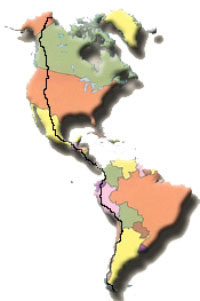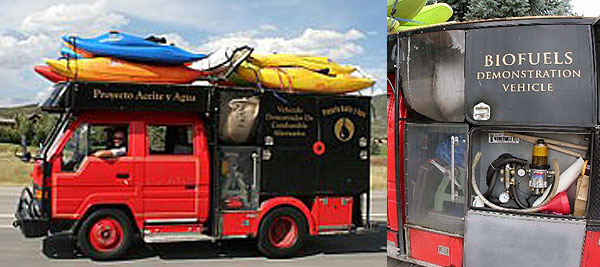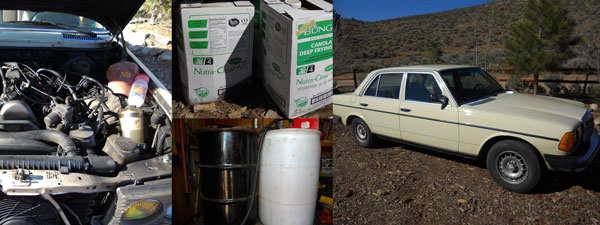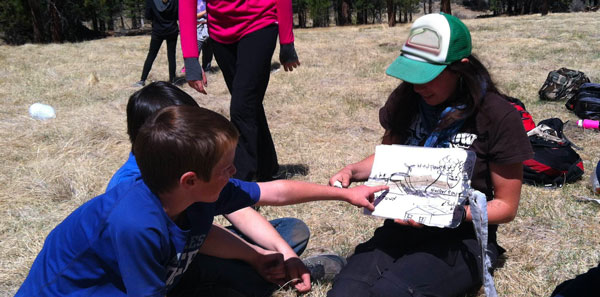Alaska to Argentina, in a truck, with NO gas???
Everything we need to sustain our lifestyles is all around us. It simply calls for a little inspiration and ingenuity to utilize our earth and create sustainable solutions for our energy needs. Motivated by the desire to travel and get into some of the best white water the Americas have to offer, professional kayaker, Seth Warren, devised a way to fund his passion using zero petroleum.
 Seth Warren and his kayaking buddy, Tyler Bradt, planned an epic journey following the summer sun from Alaska to Argentina along the Pan American Highway. They soon realized that fueling the trip would be a crippling expense. Seth and Tyler began to look into alternative ways to power their adventure with waste vegetable oil from restaurants, a free and easy solution that fit perfectly into their budget.
Seth Warren and his kayaking buddy, Tyler Bradt, planned an epic journey following the summer sun from Alaska to Argentina along the Pan American Highway. They soon realized that fueling the trip would be a crippling expense. Seth and Tyler began to look into alternative ways to power their adventure with waste vegetable oil from restaurants, a free and easy solution that fit perfectly into their budget.
The more they learned about fuels, the more they realized what a huge opportunity they had to inspire others, especially those most affected by the petroleum business in Central and South America. All they had to do was build the ultimat adventure vehicle for all tight-budgeted wanderers.
With help from friends and large company funding, they transformed an old Japanese diesel fire truck into ‘Baby’. Baby became the ultimate travel and teaching tool.

Equipped with a seed press to show how even road side plants can be used as fuel, a spiral staircase to an upper fun deck, and pull out tents; all assembled for easy demonstration. By 2006, Baby was ready to go. Seth and Tyler set off to demonstrate to youth the benefits of new ways to fuel cars!
Sounds great, right? But you don’t have to find a sponsor and make a documentary to drive a veggie oil vehicle; you just have to be willing to get a little “dirty”. It’s pretty simple, really. Find an older diesel vehicle (Mercedes or Jettas are great), then talk to the local fast food establishment to solidify a good, relatively clean source of oil. This 1983 Mercedes 300D runs on waste vegetable oil, WVO, from Get the Burger, a local Big Bear restaurant. The oil is transported home in “cubies” and filtered through a plastic strainer (step one), then a poly felt filter bag (step two). There’s no need for an expensive set up; used 55 gallon drums work well for this gravity fed system. The final step is pumping the WVO into the vehicle, the pump being the biggest investment. With fuel prices on the rise, wouldn’t you love to save yourself all those trips to gas station?

 Back to the boys…by the time Baby made it to Central America, these guys were getting a lot of attention. As they gathered more publicity, the US Embassy got a hold of them and began organizing stops and demonstrations for them in each city they went to. They became a symbol for resource conservation and inspiration to change.
Back to the boys…by the time Baby made it to Central America, these guys were getting a lot of attention. As they gathered more publicity, the US Embassy got a hold of them and began organizing stops and demonstrations for them in each city they went to. They became a symbol for resource conservation and inspiration to change.
In Guatemala City, where pollution is a big problem, the project allowed agencies to show their people that they can re-utilize material once thought of as waste to protect the environment.
Their original focus on the youth and schools expanded to nations and people of all ages. By the end of their journey, Baby traveled 61,000 kilometers using waste oil from restaurants as well as canola, soy, palm, fish, chicken, and pig oil. It is the longest journey powered by zero drops of petroleum.

Seth and Tyler’s journey inspired the type of movement and change we, as Outdoor Educators, dream of. At High Trails, we discuss with our students alternative energy sources, drawing pictures or maybe creating theatrical interpretations to demonstrate to them how these energy sources work. A 6th grader is not affected by energy bills or fuel costs, so it’s hard to create a tangible example that will resonate with them.
Baby is able to show students how cool reinventing the way we travel can be. With flashy gear and hands on components, Baby gives us a perfect example of what you can do when your wallet is not drained at the gas pump. Seth and Tyler themselves are a role model for how much adventure you can fit into a sustainable lifestyle; two cool kids that inspired ingenuity and change in adults and youth alike.
At High Trails Outdoor Science School, we literally force our instructors to write about elementary outdoor education, teaching outside, learning outside, our dirty classroom (the forest…gosh), environmental science, outdoor science, and all other tree hugging student and kid loving things that keep us engaged, passionate, driven, loving our job, digging our life, and spreading the word to anyone whose attention we can hold for long enough to actually make it through reading this entire sentence. Whew…. www.dirtyclassroom.com

Comments are closed.